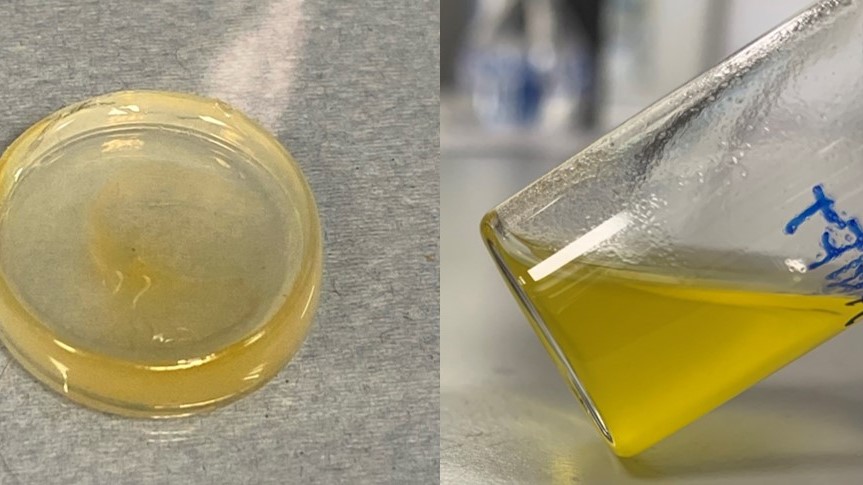Our use of lithium-ion batteries has vastly increased over the past few decades. Their sizes range from powering smartwatches to electric cars; however, they have their limits. The more charge they need to hold, the bigger they must get. This is not such a problem in our day-to-day usage of batteries, but at a larger scale becomes more apparent. If we want to save the excess electricity generated from a solar farm, for example, our lithium-ion battery would need to be extremely large, unless we can overcome the capacity-size problem.
Researchers around the world are actively attempting to solve this problem. Those driven by application are trying to shrink lithium-ion batteries without sacrificing their capacity or exploring alternatives to lithium-ion, such as sodium-ion batteries. Another branch of research, called ’blue skies research’ is carried out without a real-world application in mind. There could be interesting results or no results. Yet, this type of research often gives us exciting and significant findings which are only realised years later.
A recently published research study by Dr Kyle Pearce and Professor Michael Hill in the Department of Chemistry at the University of Bath explores a chemical process called redox. Their findings could allow for a new wave of innovation, potentially in batteries.
Redox reactions
It may sound like the name of a cleaning product, but redox is the world’s most frequently occurring chemical reaction. It is a reaction in which there is a receiving of electrons (reduction) and a corresponding giving up of electrons (oxidation). This process underpins many of our modern-day commodities, including batteries. When a charged lithium-ion battery is used to power a device, the lithium atoms give up an electron each. These electrons travel through the device powering it, while at the same time, the lithium ions move to the opposite side of the battery to accept back these electrons. To charge the battery, this process is carried out in the reverse direction.
As a result of this reaction’s prevalence, we know quite a bit about it. We know, for example, that some elements struggle to receive electrons, in other words, to reduce. Scientists have assigned each element a number, the ‘standard reduction potential’ (SRP), that gives us an idea of how well an element will reduce in water.
Hydrogen is the reference element with an assigned SRP of ‘0 volts’. Some elements have a positive SRP, meaning it is easier for them to reduce than hydrogen, and some have a negative SRP, meaning it is harder for them to reduce compared to hydrogen. Lithium ions have a reduction potential of –3 volts. This is the lowest SRP of any element, suggesting that it is very unlikely that lithium ions will undergo a reduction and receive electrons.
Breaking open redox with beryllium
Dr Kyle Pearce and Professor Michael Hill discovered something unexpected in late 2023; something that went against this well-established assumption that lithium ions are unlikely to reduce. Their findings opened a hole in how we approach the whole area of redox chemistry.
At the time, Kyle and the team were looking into fundamental beryllium chemistry, a less-explored area of chemistry due to beryllium’s high toxicity. They took a beryllium compound with a lithium ion inside it and added it to sodium metal. Crucially, they decided not to carry out their experiment in water. The sodium metal disappeared, and lithium metal began to form. This indicated that the sodium metal gave up its electron to become a sodium ion and the lithium ion had been reduced to lithium metal. The lithium ion gained an electron. Kyle carried out several tests, but they all confirmed his findings. So, by not carrying out the experiment in water, which is how the SRP is defined and which makes everyone expect that nothing should happen, they broke the status quo.
Breaking the status quo once is nothing new in the world of science. Niche reactions that defy our common assumptions happen regularly. Scientists have long believed that noble gases were inert and wouldn’t undergo chemical reactions. Now we know that is no longer true, with reports of gasses like krypton and xenon joining fluorine to form new compounds. Science is always evolving and questioning the status quo. But not often do findings have such potentially high implications.
Testing the concept further, Kyle took the beryllium sodium ion compound and added potassium metal. This time, sodium metal formed, indicating the sodium ion had reduced. The status quo set by the SRP was broken again. He continued. He added rubidium metal and reduced the potassium ion. He added caesium and reduced the rubidium ion. Each reaction was as unlikely to work as the last, according to the SRPs.
These findings highlighted that using SRPs to make assumptions about whether redox reactions may work needs to come with context. Kyle shows that when the reactions are not carried out in water, SRPs are not good guidelines to gauge the outcome of the reaction.
This leaves us with more questions. How many innovative reactions were never tried because of a glance at the SRPs? Could these findings help others researching batteries?
The answer is not that simple
Progress in research can often be likened to pushing a square boulder. Every now and then you make some progress and push the boulder over onto a new edge. For researchers, every push is a great step in the right direction. In this instance, Kyle’s research shows that an element’s SRP should not be a definitive guide as to whether a redox reaction can occur unless it is in water.
It might take a while for this ’research boulder’ to get rolling, but ten years from now Kyle and his team’s discovery could change what is considered possible in redox chemistry. While the findings themselves may not directly affect current redox-based technologies like batteries, they could inspire others to try something new.
Research that seeks to push the boundaries of our understanding often provides the spark for more application-driven innovation. Consider the future of batteries growing out from one of these sparks. Could we one day build state-of-the-art batteries capable of storing a city’s worth of electricity in the space of a house, all because one reaction didn’t follow the 'rules'?
This article was written by Ross Jackson, a PhD student in the Department of Chemistry. It was produced as part of the Science Communication Ambassador project in the Faculty of Science.



